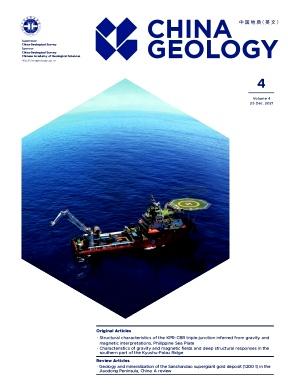Two stages power generation test of the hot dry rock exploration and production demonstration project in the Gonghe Basin, northeastern Qinghai-Tibet plateau, China
IF 4.7
3区 地球科学
Q1 GEOSCIENCES, MULTIDISCIPLINARY
引用次数: 0
Abstract
The Hot Dry Rock (HDR) is considered as a clean and renewable energy, poised to significantly contribute to the global energy decarbonization agenda. Many HDR projects worldwide have accumulated valuable experience in efficient drilling and completion, reservoir construction, and fracture simulation. In 2019, China Geological Survey (CGS) initiated a demonstration project of HDR exploration and production in the Gonghe Basin, aiming to overcome the setbacks faced by HDR projects. Over the ensuing four years, the Gonghe HDR project achieved the first power generation in 2021, followed by the second power generation test in 2022. After establishing the primary well group in the initial phase, two directional wells and one branch well were drilled. Noteworthy progress was made in successfully constructing the targeted reservoir, realizing inter-well connectivity, power generation and grid connection, implementing of the real-time micro-seismic monitoring. A closed-loop technical validation of the HDR exploration and production was completed. However, many technical challenges remain in the process of HDR industrialization, such as reservoir fracture network characterization, efficient drilling and completion, multiple fracturing treatment, continuous injection and production, as well as mitigation of induced seismicity and numerical simulation technology.
中国青藏高原东北部共和盆地热干岩勘探生产示范项目两阶段发电试验
热干岩(HDR)被认为是一种清洁的可再生能源,有望为全球能源去碳化议程做出重大贡献。全球众多 HDR 项目在高效钻完井、储层构建、裂缝模拟等方面积累了宝贵经验。2019 年,中国地质调查局在共和盆地启动了 HDR 勘探与生产示范项目,旨在克服 HDR 项目面临的挫折。在随后的四年时间里,共和 HDR 项目于 2021 年实现了首次发电,并于 2022 年进行了第二次发电试验。在初期阶段建立主井组之后,又钻探了两口定向井和一口分支井。在成功构建目标储层、实现井间连通、发电并网、实施实时微震监测等方面取得了显著进展。完成了 HDR 勘探和生产的闭环技术验证。然而,HDR 产业化过程中仍存在许多技术挑战,如储层裂缝网络表征、高效钻完井、多次压裂处理、连续注采以及诱发地震缓解和数值模拟技术等。
本文章由计算机程序翻译,如有差异,请以英文原文为准。
求助全文
约1分钟内获得全文
求助全文

 求助内容:
求助内容: 应助结果提醒方式:
应助结果提醒方式:


